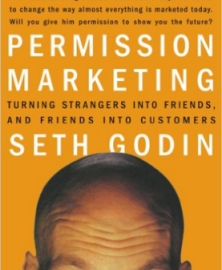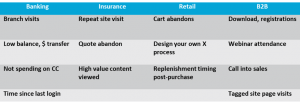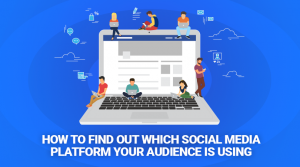16 years ago, Seth Godin wrote the book on email marketing.
Although the word ‘email’ can’t be found anywhere on the cover, Permission Marketing speaks to heart of what email marketing is ultimately about:
“Permission marketing is the privilege (not the right) of delivering anticipated, personal and relevant messages to people who actually want to get them.” — Seth Godin
At the time, this kind of thinking was almost heretical.
Marketers were still stuck in the era of ‘interruption marketing’, sending unanticipated and impersonal messages to people who didn’t want them.
The doctrine of permission marketing established new ground rules for how marketing was to be done in the digital era — where everyone is a direct marketer, attention is scarce, and consumers refuse to be interrupted.

The 3 Rules of Permission for Email Marketers
Fast forward 16 years and the principles behind permission marketing are more relevant now than ever, especially for email marketers.
To build an engaged and profitable contact list, here are three rules of permission you should never forget:
Rule #1 – Permission is earned, not bought.
“In order to get permission, you make a promise. You say, ‘I will do x, y and z, I hope you will give me permission by listening.’ And then, this is the hard part, that’s all you do.” — Seth Godin
Promises are the currency of permission. You’ll only get people onto your email list by making a promise. And they’ll only stick around if you fulfill that promise.
But many novice marketers still make the mistake of buying contact lists. It’s a practice that hasn’t yet died from the era of interruption marketing.
It’s the modern equivalent the door-to-door salesman who used to make a living interrupting housewives in the middle of the day trying to sell encyclopedias. You might get lucky and make a few sales, but it’s definitely not the way to build long term value with customers.
Here’s what does work:
- Acquire contacts organically. Commit to never buying a list or tricking people into getting on your list. When contacts engage with you on their own terms, they’re far more likely to stay engaged and become customers.
- Make a compelling promise. A great promise is what will get people on your list and position your new relationship with them. The more relevant and personal the promise is to your prospect’s life, the stronger the relationship and the better your chances of converting them into customers.
- Put your promise in the right place. Go where your prospects are. If you have an active blog, place opt-in offers there. If there are popular websites in your niche, guest blog on those sites and point readers back to an opt-in offer. Advertising on social media is another excellent way to get your offers in front of people.
Rule #2 – Permission is a journey, not an event.
“The goal of the Permission Marketer is to move consumers up the permission ladder, moving them from strangers to friends to customers. And from customers to loyal customers. At every step up the ladder, trust grows, responsibility grows, and profits grow.” — Seth Godin
When a contact opts in, you’ve earned the lowest level of permission.
It’s what Seth Godin calls ‘situational permission’, because you earned it by making the right offer at the right time. It’s not unconditional and it can be revoked easily.
The highest level of permission is what’s called ‘intravenous permission’, where you make buying decisions on behalf of the consumer because you’ve built up enough trust that they’ll effectively buy whatever you recommend. This is the holy grail.
Ultimately, the goal is to continue escalating the relationship to higher and higher levels of permission until, eventually, customers will buy whatever you tell them to buy.
Here’s are a few tips to help get started:
- Build your permission ladder. What are the levels of permission on your list? How can you escalate relationships from opt-in to sale? Most email marketers haven’t clearly defined the steps they want subscribers to take between opt-in and conversion. This is an important place to start.
- Segment your list by journey. Your subscribers are not all identical. Different customers are on different journeys and their motivations for engagement will vary. Define the different pathways to becoming a customer and segment your list accordingly to make sure your content is always anticipated, personal, and relevant.
- Automate permission-building. The real power of email marketing lies in automation. Once you’ve built your permission ladder and segmented your list, make good use of autoresponders and other automation tools to put the process of escalating permission on auto pilot.
Rule #3 – Permission is temporary, not permanent.
“The promise is the promise until both sides agree to change it. You don’t assume that just because you’re running for President or coming to the end of the quarter or launching a new product that you have the right to break the deal. You don’t.” — Seth Godin
The idea of losing permission is a scary thought. It’s the marketing equivalent of a breakup.
But the great thing about email marketing, as opposed to relationships, is that you’re able to see the warning signs long before you lose permission for good.
Just pay attention to these three numbers:
- Open rates measure how much subscribers anticipate receiving your emails. If your open rates start to drop, it’s a good sign that you’re not consistently delivering on your promise or the topic itself isn’t as interesting to your subscriber as it used to be.
- Click rates measure how effective your content is at inspiring action. It’s nice when people read your email, but if they’re not taking the intended action, that’s a sign that you’re losing permission.
- Unsubscribe rates track when you’ve finally lost permission for good. When someone unsubscribes from your list, it means they’ve gotten to the point where they’d like to formally revoke permission and never hear from you again.
Marketers tend to focus on unsubscribe rates as the ultimate measure of when permission is lost. But the truth is, you probably lost permission far before your subscriber reached for that unsubscribe button.
Here are a few tips to help you hold onto permission, and get it back when it’s slipping away:
- Decide what you will NOT do. You made a promise to get people onto your list. It’s important to understand what you need to do to fulfill that promise. But it’s just as important to know what you will NOT do to jeopardize the relationship and the trust you’ve built. For example, if you run an email newsletter that features knitting tutorials for the elderly, trying to sell them dentures might not be well received (even if they need them).
- Follow up with lost contacts. Why do people unsubscribe from your list? This kind of feedback, if you can get it, is incredibly valuable. Often, it’ll point you towards mistakes you didn’t even realize you were making that are easy to fix.
- Build a re-engagement sequence. Just because someone is not that into you at the moment, doesn’t mean they’re gone forever. If you notice some subscribers have stopped opening your emails or taking action on them, build a follow up sequence to re-engage them. Again, automation is your friend here.
Email is the Holy Grail of Permission Marketing
“Real permission is different from presumed or legalistic permission. Just because you somehow get my email address doesn’t mean you have permission. Just because I don’t complain doesn’t mean you have permission. Just because it’s in the fine print of your privacy policy doesn’t mean it’s permission either.” — Seth Godin
The inbox is a sacred space. It’s guarded more closely than any other medium because it’s where real work gets done.
For that reason, it’s also the most cut throat. If you make your way into the inbox and blow it, you’re just one click away from getting the boot.
But if you succeed at building permission at every step of the relationship, by fulfilling promises and living up to the responsibility of being in the inbox, you’ll have the opportunity to earn loyal customers for life.
Digital & Social Articles on Business 2 Community(171)









